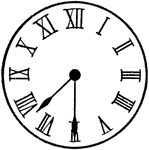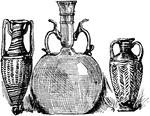
17th Century Stoup
This 17th century stoup is made out of silver. It is used to store holy water found in Roman Catholic…
Fasces of a Roman Magistrate
"In Rom. antiq., bundles of rods, usually of birch, with an ax bound in with them, the blade projecting,…

Fenestella in the Church of Norrey
"Fenestella. In Roman Catholic churches, a niche on the south side of an altar, containing the piscina,…

Types of Files
"Files. a, cotter-file when large, and verge- or pivot-file when small; b, square file (parallel or…

Forum of Pompeii
"Forum of Pompeii. A, principal entrance; B, a Corinthian temple; C, the public prison (carcer publicus);…
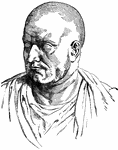
Publius Cornelius Scipio Africanus
Publius Cornelius Scipio Africanus was a general in the Second Punic War and statesman of the Roman…

Ancient Roman Baths
Bathing was an important part in Ancient Roman culture and society. In Germany there are These Roman…
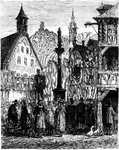
Simonswald
Archaeological artifacts show that Simonswald was home to farmers as early as 6000 to 3000 BC. Roman…

Choir of the Church of St. Sebald
A church of both Roman and Gothic architectural design. From the wall of the presbytery and extending…
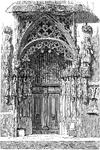
Bride's Door at Church of St. Sebald
St. Sebald is a church of both Roman and Gothic architectural design. On the northern side is the Bride's…

Glyptothek
The Glyptothek is a museum in Munich, Germany, which was commissioned by the Bavarian King Ludwig I…
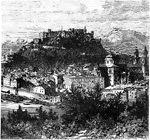
View of Salzburg
Salzburg was a city state in the Roman empire until 1805, when it was conquered by the Austrian army.…

Ramparts of Ulm
Ramparts or limes, defensive walls or fortifications constructed for defense of ancient cities or settlement…

Lintz on the Dabube
A picturesque view of Lintz (Linz) on the Danube with a small number of buildings on the river banks.…

City, Passau
Passau is one of the oldest cities in Germany, a village of Gauls in early days; and later, a Roman…

View of Lintz
A picturesque view of the Lintz (Linz) city center. Lintz was founded by the Romans, who called it "Lentia."…
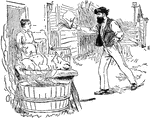
Captain Knott V. Martin's Pig
It is four o'clock in the afternoon when a messenger rides up to the house of Captain Knott V. Martin.…
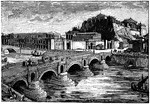
Capitoline Hill in Rome
The Capitoline Hill, between the Forum and the Campus Martius, is one of the seven hills of Rome. By…
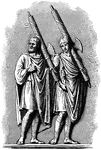
Roman Civil Servants
An illustration of two lictors, members of a special class of Roman civil servants. Lictors had special…

A Roman Soldier, or Legionary, with a Short Javelin and Shield
Illustration of a Roman soldier, also called a legionary, carrying a shield, short sword, and a short…

Publius Cornelius Scipio
Publius Cornelius Scipio (died 211 BC) was a general and statesman of the Roman Republic. A member of…
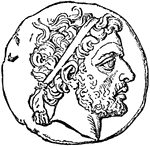
Philip V of Macedonia Coin
An illustration of a coin with the face of Philip V of Macedonia. Philip V was King of Macedonia from…
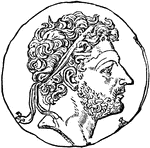
Perseus of Macedonia Coin
An illustration of a coin with the face of Perseus of Macedonia. Perseus the legendary founder of Mycenae…

Bust of Marius
Gaius Marius was a Roman general and politician elected consul an unprecedented seven times during his…

Lucius Cornelius Sulla Felix
A sculpture of the head of Lucius Cornelius Sulla. Lucius Felix. Lucius Cornelius Sulla Felix, or simply…
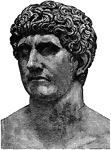
Bust of Mark Antony
Marcus Antonius, known in English as Mark Antony, was a Roman politician and General. He was an important…
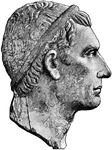
Bust of Julius Caesar
Gaius Julius Caesar was a Roman military and political leader. He played a critical role in the transformation…

Coin of Vespasian
Titus Flavius Vespasianus, commonly known as Vespasian (November 17, 9 – June 23, 79), was a Roman…

Streets of Pompeii
An illustration of the streets of Pompeii. Pompeii is a ruined and partially buried Roman town-city…
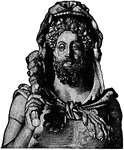
Bust of Commodus
Lucius Aurelius Commodus Antoninus (31 August 161 – 31 December 192) was a Roman Emperor who ruled…
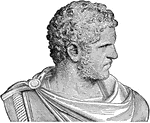
Bust of Caracalla
Caracalla (April 4, 188 – April 8, 217. Caracallus ), born Lucius Septimius Bassianus and later called…

Roman Forum in 1885
An illustration of the Roman Forum as in 1885. The Roman Forum, sometimes known by its original Latin…
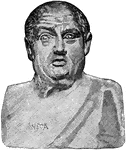
Bust of Seneca the Elder
An illustration of the bust of Seneca the Elder. Lucius or Marcus Annaeus Seneca, known as Seneca the…
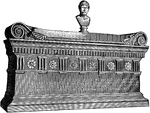
Sarcophagus of Lucius Cornelius Scipio Barbatus
An illustration of the sarcophagus of Lucius Cornelius Scipio Barbatus. Lucius Cornelius Scipio Barbatus…

Sculpture of John Wycliffe
A sculpture of John Wycliffe, an English theologian, lay preacher, translator and reformist. Wycliffe…

Mary I of England
Mary I (18 February 1516 – 17 November 1558), was Queen of England and Queen of Ireland from 19…

Mitre
"MITRE. A sacerdotal ornament for the head, worn by Roman Catholic archbishops and bishops on solemn…
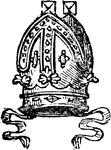
Mitre
"Mitre. A sacerdotal ornament for the head, worn by Roman Catholic archbishops and bishops on solemn…

Pall
"Azure, on a pall argent, four crosses fitchy sable, in chief a cross pattee of the second. PALL. A…

Roman Cameo-Glass
"Ancient Roman Cameo-Glass. Amphora from Pompeii, Museo Nazionale, Naples." -Whitney, 1911

The Kiss of Judas
The Kiss of Judas is an engraving by Albrecht Dürer in 1508. It is part of a series of engravings…
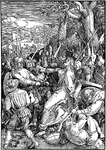
Christ Taken Prisoner
Christ Taken Prisoner is a woodcut by German artist Albrecht Dürer in 1510. It is part of a series…
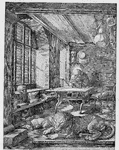
St. Jerome In His Cell
St. Jerome in his Cell is an engraving that was created by German artist Albrecht Dürer in 1514.…
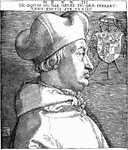
Cardinal Albrecht of Brandenburg
This is an engraved portrait of Cardinal Albrecht of Brandenburg, Germany. He was a cardinal priest…
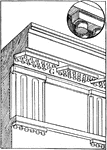
Gutta in Doric Architecture
"Guttae in Doric Architecture. A, form of gutta beneath regula; G, G, guttae beneath mutules and regulae.…

Vase
This vase with lid is an antique design, Greek or Roman. It was designed by famous potter Josiah Wedgwood.

Vase
This vase with handle has an antique design, Greek or Roman. It was designed by famous potter Josiah…





